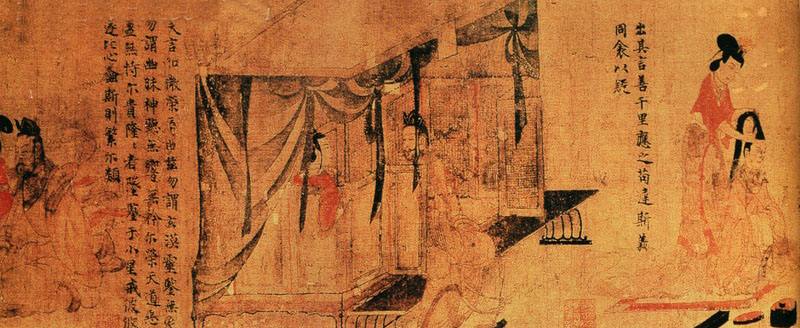Gu Kaizhi Ori-ginator of Chinese painting
3 min readGu Kaizhi is widely regarded as the founder of traditional Chinese painting,best known for his portraits and figure paintings.He was also a gifted poet and calligrapher.His ec-centric behavior also made him famous.
In 348 AD,he was born into an official’s family in what is today’s Wuxi in eastern China’s Jiangsu Province.Gu be-came interested in painting when he was only three.He drewand painted on walls,doors,tables,even the back of his own hands.
One day, the boy and his father went to visit his auntie and the boy held back while his father entered the courtyard. When the boy didn’t go inside, his father went out to find the boy drawing five different grain crops on the wooden gate with a piece of hard clay.
When he was 20, Gu was already known as one of the most talented painters at that time. He loved to paint Buddha, human figures, birds, animals, mountains and rivers. But, it was his figure painting that made him immortal.

Critics described his brush work as etherial, saying his strokes in figure paintings “flowed as smoothly as a light silk ribbon fluttering in a breeze.”His figures were praised as di-vinely graceful and vivid.
Gu once said:”In figure painting, the clothes and appear-ance are not that important. Only the eyes are essential, be-cause they are the windows to the soul.”So, Gu often left the eyes of his figures unfinished and waited for a long time, sometimes a few years, before he returned to paint in the eyes.
One day, he attended a fund raising event for a new tem-ple in Jiangning(today’s Nanjing in Jiangsu Province). But only around 100,000 copper coins had been collected on the first day. Gu then wrote out a pledge for a million copper coins. The abbot was surprised because he knew Gu was not a rich man.
The abbot tried to persuade Gu to revoke his pledge, but Gu insisted, asking the abbot to prepare a white wall where he would paint a portrait of Vimalakirti,a popular Buddhist saint.
Gu spent three days on the painting. But on the eve of the temple’s opening, he left the eyes unfinished. He told the abbot to ask each group of people coming to see the portrait to do-nate 100,000 coins on the first day of the opening and 50,000
coins on the second day.
Early next morning, after bathing and praying, Gu painted the eyes of the Buddha. Suddenly, the portrait on the wall
seemed to come to life and the Buddha’s eyes shone with kindness. Thousands of visitors swarmed into the temple to see the portrait and they were so awed by the divine image that they worshiped in front of the painting and donated generous-
ly. In three days, the temple collected several million copper coins.
Although more than 70 works are usually attributed to Gu, only copies of three hand scroll paintings are extant. One of them,”Admonitions of the Instructress to the Palace Ladies,”was looted by British troops in 1900. It is now in the British Museum.
Gu also wrote three books about painting theory,”On Painting,””Introduction of Famous Paintings of the Wei andJin Dynasties”and”Painting Yuntai Mountain.”Today, artists of traditional Chinese painting still follow the rules set for by Gu more than 700 years ago.








